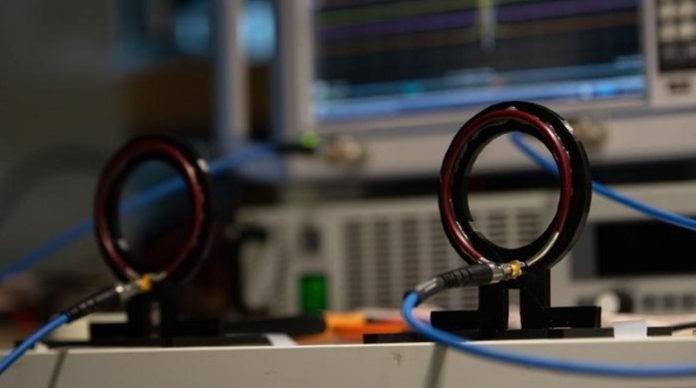
Engineers at Aalto University have figured out a way to charge devices wirelessly over longer distances.
They made use of something called “radiation suppression,” a technique that improves the interaction between antennas sending and receiving power.
You might have noticed how your phone charges very efficiently on a wireless charging pad, but only when it’s really close to it.
That’s because this method uses something called “magnetic near fields,” which are great for close range but not so much for longer distances.
However, new research shows that these antennas can work efficiently even at greater distances if we control the amount of energy they lose during transmission.
This could be a big step forward in the world of wireless charging.
A few years ago, the same team made a charging system that could power devices from all angles.
Now they’ve built on that idea by taking a closer look at how charging works at both near and far distances.
They’ve found that, with the right frequency and setup, you can charge devices very efficiently (over 80% efficiency) at distances about five times the size of the antenna itself.
Nam Ha-Van, the lead researcher, said they wanted to find the right balance between transferring power and the energy lost during transmission, especially over longer distances.
They found that by making sure the antennas send and receive energy in a particular way (equal amplitudes and opposite phases, to be exact), they could minimize this energy loss and boost efficiency.
But how can they be sure this works in real-life situations? The team came up with a way to analyze any wireless charging system, either with maths or experiments.
This allows them to better understand how efficiently these systems can transfer power at different distances, something that hasn’t been done before. They tested their ideas using two antennas at a large distance apart and found their method works well.
Nam Ha-Van hopes that their work can help improve wireless charging systems, allowing us to charge devices from further away while still maintaining high efficiency.
This could be very useful not only for phones and gadgets but also for things like biomedical implants.
These devices have limited battery life and can be difficult to charge due to barriers like human tissue, but this new method could offer a solution.
The study was published in Physical Review Applied.
Follow us on Twitter for more articles about this topic.
Source: Aalto University.



